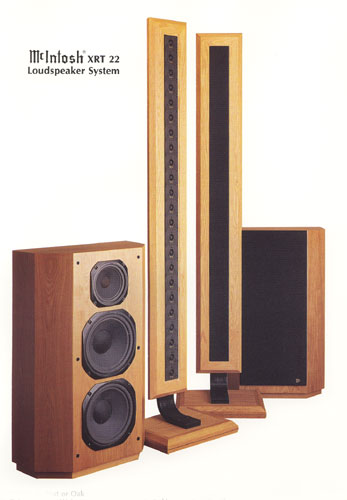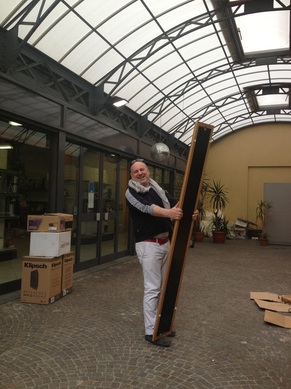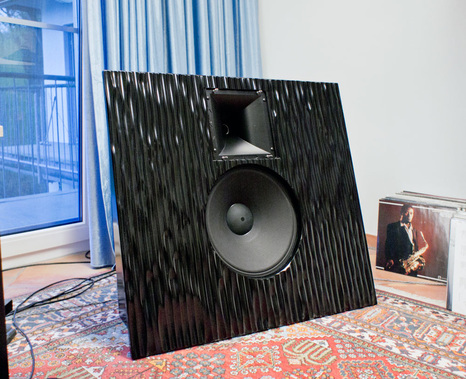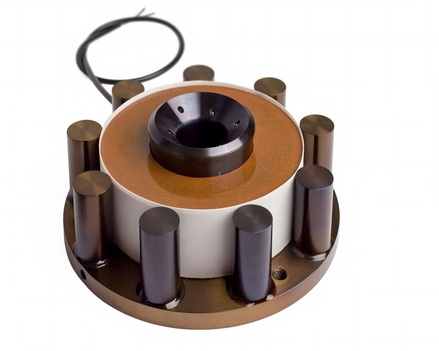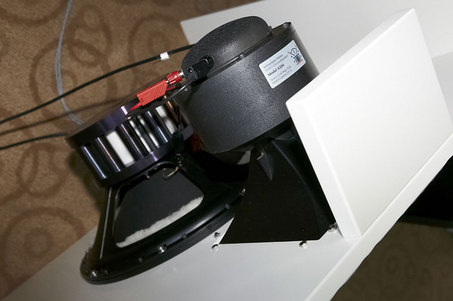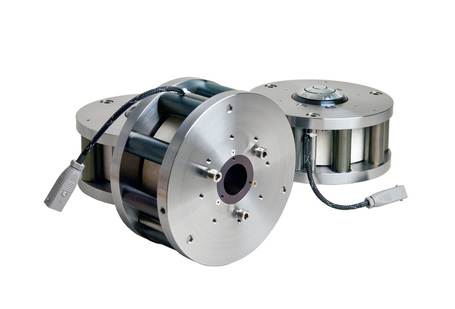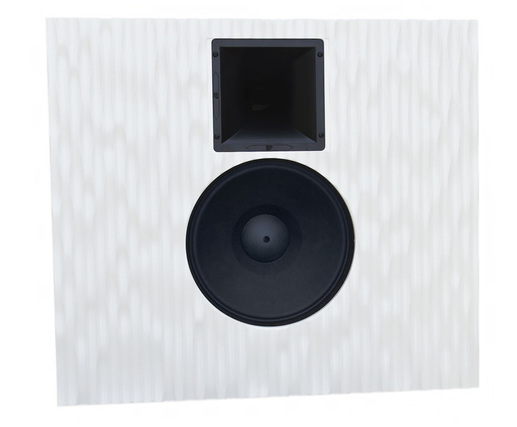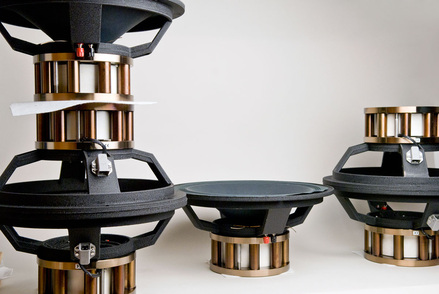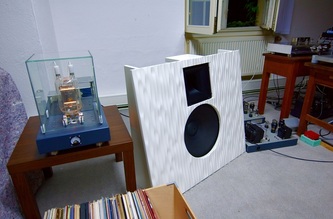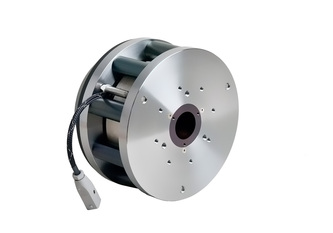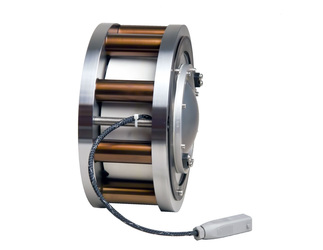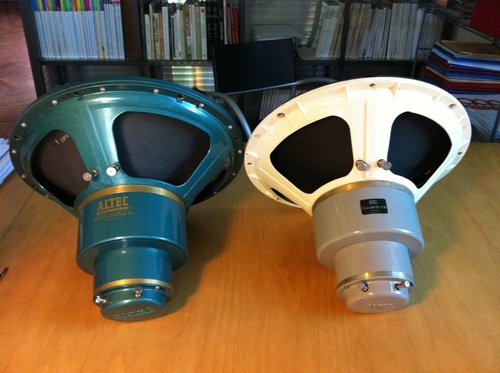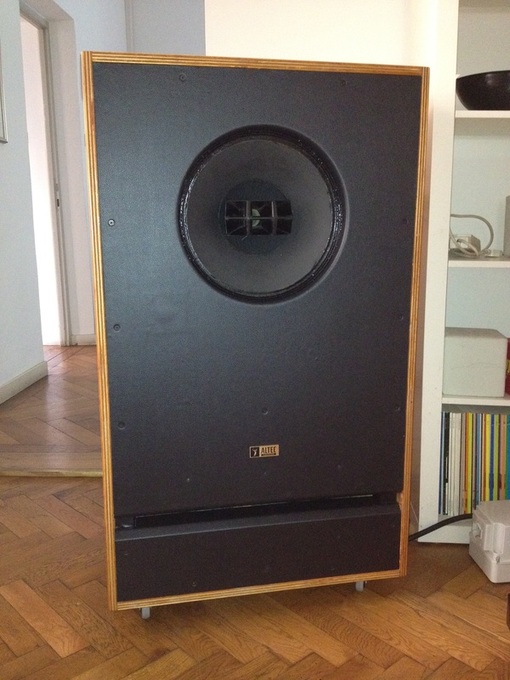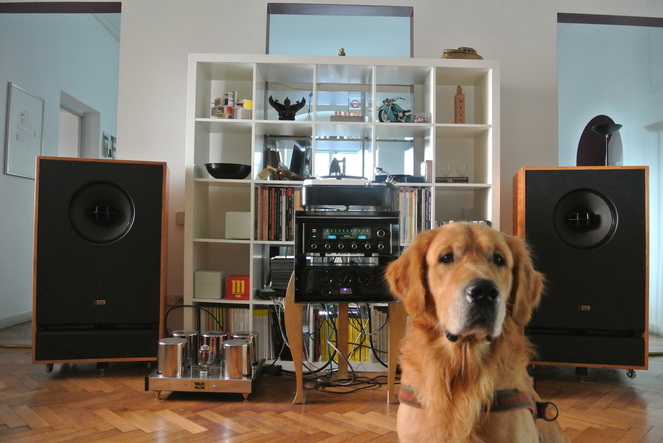Vintage
McIntosh XRT 22: The Quartet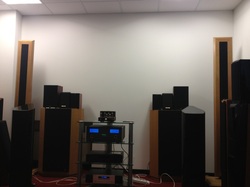
It's one of those days in which you don't feel like working and you crave for something different. So I gladly agree with Domenico Pizzamiglio, friend and "Hi-Fidelity colleague" to visit a shop in Gallarate - a shop we already spoke about: Pieffe Elettronica. The reason for visiting is that he wanted to listen to a couple of Audio Note loudspeakers. Once we get there, Domenico familiarizes with his future new loudspeakers and I look around the different listening rooms of this big shop. I listen to a couple of big Cerwin Vega! XLS215 in one room and in another room I bump into one of my youth myths, a couple - well actually it's four of them - of McIntosh XRT22.
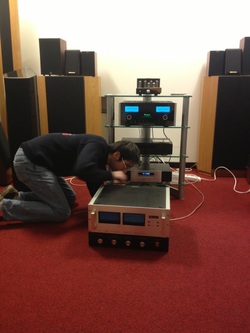
I'd love to listen to them and I start thinking how to ask it to Marco - the shop owner -. It's sooner done than said, his shop assistant brings into the room a big old McIntosh MC2500 amp to make them play, since these "big guys" need a powerful amplifier. Just a few seconds and we immediately understand that we are in front of two aces. They are put in a room that is not really fit for listening - as you can see from the picture - but the bass is extremely powerful and extended. As for the high range it must be re-listened and evaluated in a different setting. A Bach’s "Toccata and Fugue", a record that Marco suggested brings out an organ pedal that literally makes us jump up from the couch.
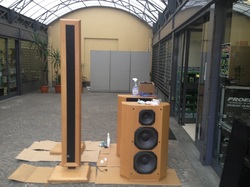 McIntosh XRT22
Well, what else can I do then? Exactly what you are thinking. I have to test them in my own listening room so I agree to come back in a few days with a van to take them home with me for an accurate evaluation. The idea of buying them is slowly creeping in my mind. I read about their history and characteristics on the website where the designer, Roger Russell, explains all the details and the procedures that led to their construction and production in the McIntosh plant. We will examine all the details that you can easily find in the website and we want to thank Roger Russell for letting us publish his pictures and also for letting us quote his article.
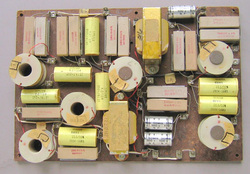
As I said before this set is composed of 4 pieces. The large and small cabinets contain both two 12" McIntosh woofers and a 8" McIntosh midrange. The crossover, whose prototype you can see in the picture, cuts at 150 Hz the first woofer, at 250 Hz the second and at 1500 Hz the midrange. For ranges over 1500 Hz there are the twenty-three 1" tweeters made by Philips on McIntosh specific design. The columns are linked to the bass unit with a proprietary cable. The declared frequency response is 20 - 20000 Hz and the applicable power is 250 w RMS with peaks of 500 W. Sensitivity is 87 dB. XRT22 have been produced from 1986 to 1993 and in the US their price was around 9.100 USD. Supports for the columns, that are provided with a hook to hang them, are sold separately. For further information I suggest to take a look at Roger Russell's website that is full of interesting suggestions on the speakers and much more.
Well, after a few moments of listening in the shop, Domenico and I started wondering why these loudspeakers had little or no success in Italy. One reason might have been their high retail price but there are vintage "monsters" that are still the object of desire for many - and I'm thinking of JBL Paragon, of the big Tannoys or Altecs - while XRT22 are lost in oblivion. McIntosh loudspeakers, despite electronics, have never had many followers here in Italy and I am sincerely surprised after having listened to them. The only reason I can figure out is that of their difficult positioning in a room. These two loudspeakers are really big and heavy. As I already said the bottom end of the XRT22 is buoyant and is almost a "massage to your guts". For this reason they need to be positioned in a room that minimizes all the resonances. I read in an online forum that a US owner positioned them in a very big room but had to buy an equalizer to "tame" its exuberant bottom end. 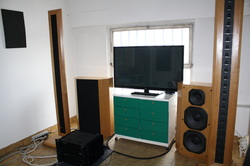 McIntosh XRT22
My room, on the other hand, is
strange and debunks all theories about the ambience response. It's a small
room, only 20 square meters but due to its plan, it does not have resonances in
the bottom end and it absorbs a lot of energy. At first I positioned the XRT22 in the place that I thought might
enhance the bottom end in this room: the two corners on the front wall. But to
my big surprise no bass, nothing at all. This is not all, the preamp volume
knob was turned at "3 o'clock", while working with the two 400 W Brystons, but the sound pressure was not
what I expected. I don't give up easily so I pulled forward the bass unit of
about 1,5 meters and the bottom end listened in the shop shows up again. From
that moment on it's been a matter of fine tuning work what I have done moving
the components from the sides and the front wall. It took almost half a day of
hard work but I succeeded in finding the ... right low range position. I still
had to place the tweeter towers and I was a little bit worried for two main
reasons: one is that it's not easy to
set up two different components and the other one is the relatively small dimension
of my room. I begin with the position that Roger Russell suggests, the towers
positioned on the inner side. I immediately realize that this position is not
right, the image is too flat in the middle. The project probably envisaged a
bigger space so I move them on the outer side and the effect is that of an
immediate enlargement of the scene and of the "listening line" that
almost blows away the walls ... unbelievable, but not enough yet. At what
distance from the front wall should I put them considering the bass units?
Russell's website does not give instruction and I don't have the owner's
manual. I ponder on the fact that if the two columns can be hang on the walls
and the bass units can be positioned close to the same wall, so the correct set up must be with the column
in line with the bottom of the cabinet ... but it does not work. Maybe it's
because the two columns are positioned on the outer line. I try to toe them in,
I move also the bass unit towards the listening point but I don't get the desired
result. The sound is not in phase, there's something "detached" in
it. I listen to "Amused to Death" by Roger Waters and I hear the
famous dog barking in front of me and not on my side. No, it's not correct yet.
After another day of movements and tests I find the best position for the
tweeters at about 20 cm from the woofers and not too much in front of them in
order not to cover the midrange output. The dog now barks closer to the right
side, it's not perfect but we are not that keen on special effects and the
global sound we obtain is really very good. Many times I have wondered if these
last twenty years have passed in vane in the electroacoustics field. I will
describe the sound of these McIntosh and make a comparison between them and my
JBL 4350B that are well known. Let's start with the bottom end: XRT22 defeats
JBL both for deepness and quantity. They have nothing to envy to the
Californian loudspeakers as for sharpness, even if their sound is more mellow
and less close to reality. No matter how loud you make them play, the sound of
the voices and the medium range in general remains clear and clean. I have
never heard something like this. The medium range cannot compete with the super
performing JBL compression drivers. But this was an easy guess. I think that at
the moment there is no midrange that can get close to the sharpness and speed
of the 2240 drivers, loaded with the small horns. About the high range we can
say that it's not as good as that of JBLs (but it's not that far from them) and
the fact that it comes from high columns creates an extraordinary wide and big
soundstage. Records recorded in churches or theatres touch from the very first
minute of listening. The XRT22 take you instantly to the place where music
comes from. It's not only the front wall that plays, it's the whole room that's
playing ... well no, it's the whole room that plays so loud that it disappears.
It's an incredible effect that makes you think of a multichannel system, but
sound is coming from one direction and not from the back. Dynamics is good but
the loudspeakers have to be pushed a lot. They need 250W if you want them to
play as in a live event or close enough to it. They have a fascinating sound,
more tamed than that of the "wild" JBL monitors, but I do not
recognize them as an alternative. The ideal would be to have them both and use
them alternatively according to the mood of the day. To keep them both one
should have a room with a 5 meters wall. I do not have this much space so I am
a forced to choose. It has not been easy.
The McIntosh speakers left my room one week ago and I still miss their presence. I chose to stick with my JBL because they have a peculiar sound I cannot do without. What I really miss of the XRT22 is their beautiful and impressive bass. I'm trying to compensate to this lack with a subwoofer, let's see if I will find a solution. For a moment I have considered the possibility of keeping both loudspeaker and use them alternatively. I have given up because moving them in and out of the room would be very hard and, while not in use, one of the two would have had to stay in the dust and get damaged. I let the XRT22 go with a sad heart, but I feel good thinking that they will be welcomed in the room of a music lover that will make them play every day. Well, the reason to tell you this story is to remind to fifty-year old persons and let young people know about a loudspeaker that is not as famous as it deserves. And if someone tells you that McIntosh did not produce good loudspeakers, well tell them they are right. These loudspeakers are simply wonderful. A big thanks to Marco Pavan of Pieffe Elettronica that made this experience possible. Angelo Jasparro Domenico's commentThere are experiences and sensations that are unforgettable.
It's 1979, almost the end of the year. I visit a shop in Torino that is located in Cernaia street, to collect my brand new Magneplanar, and I see two big and long items that stare at me from the bottom of the room. Their logo identifies them as music reproduction items. I remember being a bit impressed by that long line of tweeters. The MG that I was taking home are not small but those other loudspeakers were really big. During that day they were promoting Threshold, American amps that had very good reviews. That name was at the time an emergent brand but now it's part of the recent history of audio. I remember that I was with a fellow soldier that became a friend of mine, and we were listening to a piano concert. Suddenly my friend Alberto said: " too bad that the piano player has dandruff, look, it's there, on his shoulders ..." I stared at him with a quizzical look at first but then I understood that he was referring to the realism of reproduction. As a matter of fact those components were really impressive for the time and for the recording techniques of that time. While they were loading my Maggies, Alberto and I remained there, motionless, to listen to the music that the McIntosh XRT22 were playing. I have lived again this experience with Angelo Jasparro when we played Vivaldi's "Four Seasons", performed by Drottningholm Ensemble (BIS) and I have heard Niels-Erik Sparf violin play in front of me, just few meters away; loud, with a realistic timbre, dinamically free and with the environment resonances that created a very realistic situation. A sensation that gave me goosebumps. I cast a glance to Angelo and then, off we go listening to a lot of records. Well, we must keep in mind that JBLs have a bigger ability in managing dynamics and that are preferable if listening to rock or frenzied rhythms, but the McIntosh loudspeakers have the rare ability to create a realistic soundstage and have a great timbric fidelity. It's impossible to recreate in a house the greatness of a pipe organ but the powerful bass of the XRT22 is able to deceive very well. Moreover it has a very high top range and a tall soundstage, all these characteristics together create a realistic effect that not many other systems are able to create. It manages also ample dynamics effortlessly and can recreate easily either the orchestra soundstage and the voice of the Boss Bruce Springsteen. I must say that with small ensembles, this is the most realistic experience that I have had. To carry them into the listening room it's been a hard work but it 's been worth it. “Oldies but goldies” it's a saying that turned out to be true. What I experienced is a flashback that has not erased the nice sensations felt in 1979 but has enhanced them. When something is of good quality it remains so also during the years. Domenico Pizzamiglio Translation: Francesca Rubino
Six questions to Wolf von Langa: Audio between past and future
|

